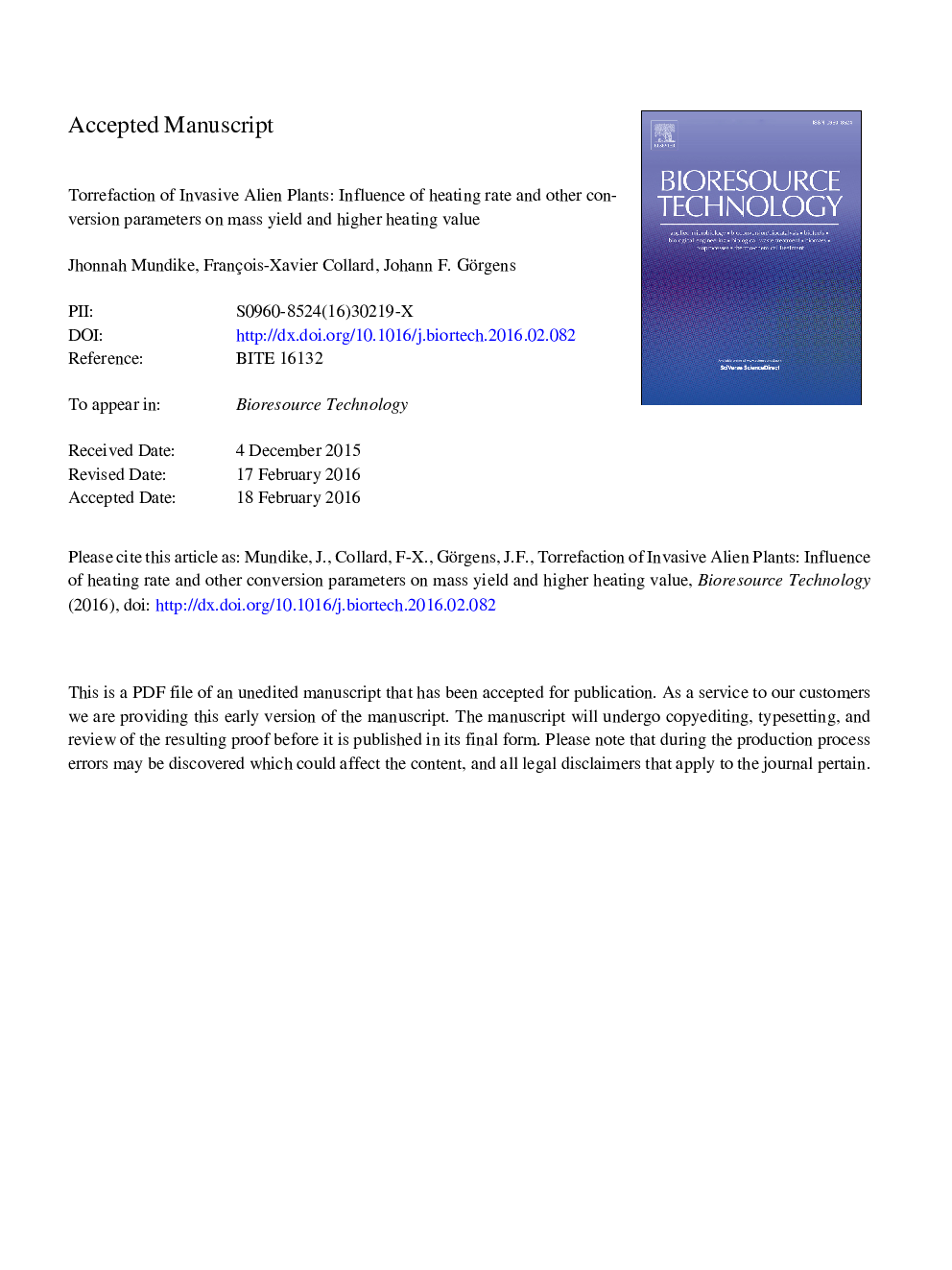| Article ID | Journal | Published Year | Pages | File Type |
|---|---|---|---|---|
| 679207 | Bioresource Technology | 2016 | 32 Pages |
Abstract
With the aim of controlling their proliferation, two invasive alien plants, Lantana camara (LC) and Mimosa pigra (MP), both widespread in Africa, were considered for torrefaction for renewable energy applications. Using thermogravimetric analysis, the influence of heating rate (HR: 2.18-19.82 °C minâ1) together with variable temperature and hold time on char yield and HHV (in a bomb calorimeter) were determined. Statistically significant effects of HR on HHV with optima at 10.5 °C minâ1 for LC and 20 °C minâ1 for MP were obtained. Increases of HHV up to 0.8 MJ kgâ1 or energy yield greater than 10%, together with a 3-fold reduction in torrefaction conversion time could be achieved by optimisation of HR. Analysis of the torrefaction volatiles by TG-MS showed that not only hemicelluloses, but also lignin conversion, could influence the optimum HR value.
Related Topics
Physical Sciences and Engineering
Chemical Engineering
Process Chemistry and Technology
Authors
Jhonnah Mundike, François-Xavier Collard, Johann F. Görgens,
